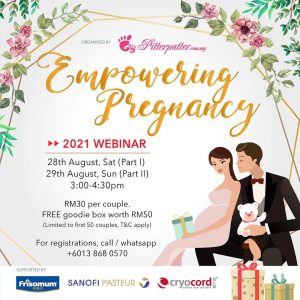Endometriosis is a condition whereby the tissue that lines the womb (uterus) called endometrium, is found in places outside the uterus. During menstruation, the normal endometrial tissue is shed from the uterus as menstrual blood but the lining that is implanted outside the uterus has no way of leaving the body. When this happens, this endometrium lining becomes inflamed, swollen and irritates the surrounding tissue forming painful scar tissue (adhesions) or ovarian cyst containing blood (endometrioma). The scar tissue could also bind any of the pelvic organs together or cover them completely.
Unfortunately, we still do not know the cause of endometriosis. Scientists have proposed several theories but nothing has been conclusively proven. One of the theories is known as the ‘retrograde menstruation’ whereby some experts believe that during menstruation, the endometrial tissue flows back through the tubes and settles into the pelvic cavity. Unfortunately, the immune system is unable to destroy the endometrial tissue causing it to be implanted into the pelvis.
What are the symptoms associated with endometriosis?
- Painful period (dysmenorrhoea)
- Pain during sexual intercourse (dyspareunia)
- Infertility
- Pelvic and back pain during or before menses
- Painful or frequent urination before menstruation
- Chronic pelvic pain
- Heavy or irregular bleeding
- Painful bowel movement
- Pain during ovulation
However, in some women despite multiple deposits within the pelvic cavity they remain asymptomatic. Endometriosis is a peculiar condition, whereby some women with mild disease sometimes have worse symptoms and women with more severe disease have either none or minimal symptoms.
How do you diagnose endometriosis?
- The diagnosis of endometriosis could not be made from symptoms alone based on the explanation given above. Confirmatory diagnosis could only be done by surgery. Usually this is done via a laparoscopic procedure whereby a camera (laparoscope) is inserted through a small incision in your navel (belly button) to inspect your abdomen and reproductive organs to diagnose endometriosis implants (clumps of tissue that grows outside the uterus). A biopsy on these implants could be done to confirm the diagnosis of endometriosis
- Vaginal examination could assist the doctor to suspect endometriosis especially if there is tender endometriotic spots or an enlarged blood filled cyst in the ovary (endometrioma)
- Ultrasound, MRI and CT scan may detect cyst in the ovary or deep seated endometriotic implants within the pelvis. However, they could not be used to make a definitive diagnosis of endometriosis.
How do you classify the severity of endometriosis?
A staging system has been developed by the American Society of Reproductive Medicine and classified according to the findings noted during a laparoscopic surgery. The stage of endometriosis depends on the location, extent of spread, depth and size of the endometrial implants, involvement of pelvic structures in the disease and pelvic adhesions.
|
Stage
|
Level of severity
|
|
I
|
Minimal
|
|
II
|
Mild
|
|
III
|
Moderate
|
|
IV
|
Severe
|
I am scared of surgery. Is there another non-invasive way of diagnosing endometriosis?
A recent study 1 have shown that by detecting nerves fibres from biopsies taken from the lining of the womb (endometrial lining) using a device inserted vaginally enables them to make a diagnosis of endometriosis with almost 100% accuracy. This is an exciting discovery as hopefully in future women need not go for a surgical procedure anymore in order to make a diagnosis of endometriosis. However, obviously larger studies are needed to validate the findings of this research.
Where could the endometriotic lesions be found?
Endometriotic lesions are commonly found on the ovaries, outside the wall of the uterus, fallopian tubes, the ligaments supporting the reproductive organs and pelvic cavity. In addition, it could also be found on the cervix, vagina, bladder, bowel and rarely in the lungs or on abdominal surgery scars.
Why do women with endometriosis have fertility problems?
About 20 – 40% of women with infertility problems have endometriosis.2 Some women have more than one cause for her infertility condition. Possible explanations of how endometriosis could cause infertility include:
- Scar tissue may distort and block fallopian tube or the ovary preventing the eggs moving to the tubes.
- Endometrial implants deep inside the pelvis could cause pain during sexual intercourse which may lead to less sexual activity.
- The endometrial implants inside the pelvic cavity could release some chemicals that may interfere with :
a) ovulation
b) fallopian tubes’ ability to move the egg towards the uterus
c) implantation
d) sperm’s function
What is the treatment for endometriosis?
Treatment plans depends on your age, severity of your symptoms, your fertility plans, the size and location of your endometrial lesions. There is no cure for endometriosis but treatment could assist with pain and fertility problems. Treatment options include:
Having pain and not planning to get pregnant:
a) Your doctor may provide you with pain killers such as anti-inflammatories (NSAID) medications.
b) Hormones to suppress ovulation and menses. By preventing ovulation and menses will lead to changes in the lining of the womb and shrinks the endometriotic implants outside the womb leading to improvement in symptoms. E.g of hormone treatment includes birth control pills, gonadotrophin releasing hormone agonist (GnRH-a) such as Lucrin or Zoladex, progestin and aromatase inhibitors. However, there may be unwanted side-effects from the hormones.
This depends on your age, the duration of your infertility, the stage of your endometriosis, whether your tubes are blocked or not and the presence of blood filled cyst in your ovary (endometrioma). Treatment includes:
a) Laparoscopic surgery to remove the endometriotic implants, release any scar tissue, restore any distortion of the reproductive organs and removal of any endometrioma. Unfortunately, endometrioma could not be treated with medication and needs to be removed surgically. The surgery could lead to improvement in pain and chances of pregnancy.
b) Fertility drugs in conjunction with artificial insemination (IUI) or in-vitro fertilization (IVF) may assist in pregnancy.
c) Hormonal therapy. Some studies have shown that gonadotrophin releasing hormone agonist (GnRH-a) given several months before an IVF cycle may increase the chances of conceiving.3
Does pregnancy cures endometriosis?
Pregnancy does not cure endometriosis but it will help lessen the pain symptoms and effects. Your doctor will probably encourage you to get pregnant as soon as possible if you have been diagnosed with endometriosis at a young age as you may have difficulty conceiving later on when you are older.
Will hysterectomy cure my symptoms?
In most patients, removing their uterus and both ovaries (hysterectomy and bilateral oophorectomy) will help relieved the symptoms associated with endometriosis to some extent. However, in some patients, they will still have persistent symptoms following hysterectomy as some of the endometriotic lesions in the pelvic cavity may be deeply seated and difficult to remove during surgery.
REFERENCE
1. Al-Jefout M, Dezarnoulds G, Cooper M et al. Diagnosis of endometriosis by detection of nerve fibres in an endometrial biopsy: A double blind study. Human Reprod Vol 00; April 2009: 1 – 6.
2. Speroff L, Fritz MA. Endometriosis. In Clinical Gynaecologic Endocrinology and Infertility, 7th Edition. Philadelphia: Lippincott Williams and Wilkins, 2005:1103 -1133.
3. American Society for Reproductive Medicine. Endometriosis and Infertility. Fertil Steril 2006; 86(Suppl 4): S156 – 160.








